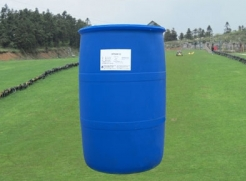Using surfactant aqueous solution to improve the wettability of coal particles has important practical significance for the control of coal dust. Non-ionic surfactants, such as sodium o-xylene alkyl sulfonate, have been used in this field. Glanville et al. discussed various factors affecting the wetting rate of coal dust. The results showed that the wetting rate measured by Walket wetting rate experiment was mainly affected by the size composition of temperature coal dust, the concentration and molecular structure of the special surfactant used. In the temperature range of 10 40 C. The wetting rate increases linearly with the increase of temperature. Similarly, at a specific temperature, the wetting rate also shows a linear relationship with the increase of the average particle size of coal dust. To be careful
The coal obtained in the mining process is mixed with clays of various granularity. These clays can be easily washed off from the surface of coal particles with large particle size, but there are a certain amount of small coal particles in the slime. This part of coal in the sludge is usually recovered by foam flotation process. This process largely depends on the different surface properties of organic or inorganic compounds in coal.

In the process of coal foam flotation, the foam is formed through the introduction of air into the coal slurry, so that the coal slurry contains impure, removed very fine coal particles and water. Coal flotation from sludge or ore depends on its wettability and contact angle, which is the angle between solid and bubble inner surface. To be careful
Three reagents are commonly used in flotation process, they are: (a) flotation accelerator or, (b) modifier, (c) foaming agent. The function of flotation accelerators or accelerators is to promote the contact between coal particles and bubbles, that is, to form a film on the surface of the flotation coal particles, which makes the coal particles hydrophobic. At the same time, it must be selective and not form a film on the surface of non-flotation coal particles. Flotation accelerators or accelerators are usually kerosene and fuel oil.
The modifiers may be pH regulators, activators, flotation inhibitors, dispersants or flocculants. For example, a selective cationic polymer flocculant is a reaction of dimethylamine with epichlorohydrin. Foaming agents are used to provide stable flotation froth, and durable and stable foam can be used to separate coal. But it can not be too durable, so that the bubble can not be broken, but also need post-processing.